Please support this site by sharing!
Spring is finally here! If you’re anything like me, that means it’s time to get out in the sunshine and play around in your garden. The season is all about making old things new, so follow along with me as I turn “trash into treasure” with the cutest DIY tire planter.
This post contains affiliate links, and I will be compensated if you make a purchase after clicking on my links. For more information, please see my disclosures.
This is a great project that not only upcycles old tires but also adds a dose of whimsy to your outdoor decorating style.
I chose to hang my tire planter from a tree so my family and I can enjoy the vibrant flowers from a distance. However, you can easily lay your tire planter on the ground, hang it on your patio, or nail it to the wall for a floating planter aesthetic.
If you don’t have a used tire just lying around, no problem! I called a local auto repair shop to ask for my tire. Discount Tire or other tire shops may have spare black tires to donate. You can also try repurposing an old tire swing your kids have outgrown.
Whatever tire you use, make sure it’s durable enough to hold your plants and soil. Some people say that large tractor tires are the most sturdy for a DIY planter, but I’ve found regular car tires work just fine!
Before painting your tire, you’ll want to start with a good cleaning. If you’re repurposing an old tire, it’s likely to be caked with dust and dirt. I suggest wearing gardening gloves!
Rubber tire after cleaningTo clean the tire, you can use any heavy-duty washcloth or rag and soapy water. If necessary, you can use a degreaser to remove any oily spots.
If necessary, you can use a degreaser to remove any oily spots.
Scrub the outside of the tire until all debris is removed. This will help the paint to adhere.
Next, you’ll need to add drainage holes to your tire planter. Using a drill bit or sharp knife, drill 6-8 holes in the bottom of the tire, leaving 1-2 inches of space between them.
This step is super important to drain water out of your planter and avoid root rot. Make sure the drainage holes cover the amount of space you plan to fill with plants.
Now it’s time to give your tire planter some color! I recommend this spray paint, which is made for both indoor and outdoor use and has a sleek finish. This type of paint also doesn’t require a primer.
I chose a teal color that I had used previously to make pressed flower wall art. You can select any hue that speaks to you based on your decor style. You can even paint multiple planters and use different colors for each one!
Before spray painting, I suggest laying down a dropcloth or pieces of cardboard to protect your work surface. You should always paint in a well-ventilated area, preferably outdoors.
You should always paint in a well-ventilated area, preferably outdoors.
Tip: When spray painting, this tool comes in handy to avoid getting your hands messy.
After spraying one side of your planter, be sure to wait a full hour before painting the other side. If you want to add additional layers of paint, wait one hour in between coats.
Let your planter dry overnight before adding your potting soil.
Once your tire planter is sporting the color of your choice, it’s time to add your soil. Evenly distribute your potting soil throughout the bottom half of the tire planter (the side with the drainage holes).
I like to use this potting soil for my plants, but feel free to use any potting mix that you prefer for your garden.
You want the height of your soil to be all the way up to the rim of your tire planter without spilling over the sides. This way, the roots of your flowers have enough room to grow.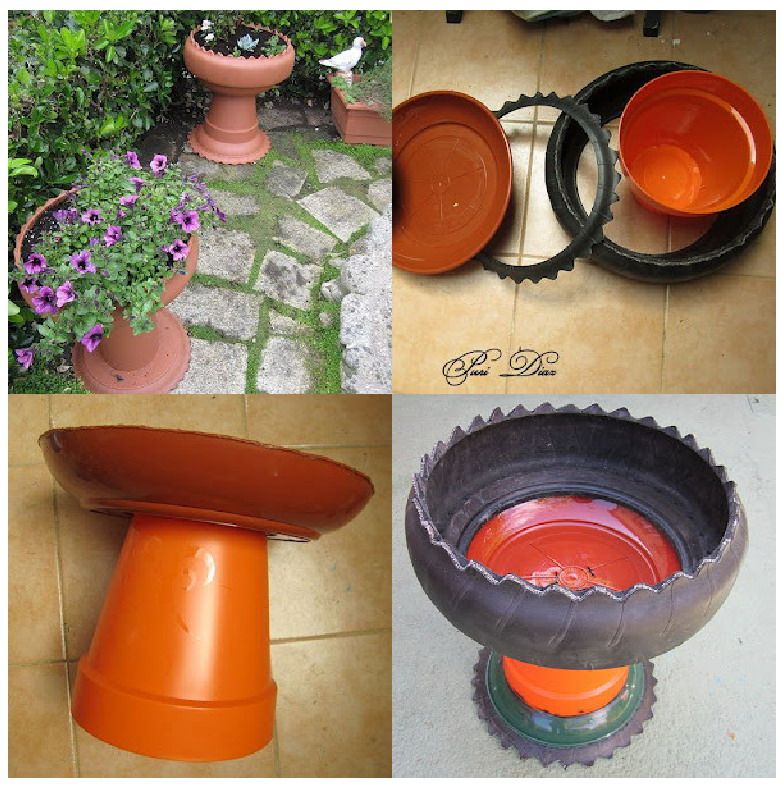
Note: Make sure to water your potting soil before adding plants.
If you’re looking for more gardening tips this season, be sure to check out my guide on Vegetable Gardening For Beginners!
Adding plants to your tire planter is all about balancing your display. In my tire planter, I have at least one thriller plant, one filler plant, and one spiller plant.
For the non-gardening experts out there, this is the technique that will keep your container garden looking professional.
Adding Yellow Calibrachoa, Angelonia and Vincas to the tire planterA thriller plant is the main focal point of your container garden. This plant is vertical in structure, adding height to your garden.
I used Angelonia as the thriller in my tire planter. I love the way the rich, deep purple color is the first thing onlookers’ eyes are drawn to!
Filler plants are mid-sized plants that are typically mounding perennials. These flowers support the thriller by filling in the inside of the planter and adding volume to your display.
These flowers support the thriller by filling in the inside of the planter and adding volume to your display.
For my tire planter filler, I chose to use white and pink Vincas, but there are hundreds of great fillers out there.
A spiller plant looks exactly how it sounds. These plants cascade over the edge of the display and spill down from the sides.
I used Yellow Calibrachoa, Petunias, and Sweet Potato Vine as my spillers. The Yellow Calibrachoa and Petunias add a lovely burst of light color, while the Sweet Potato Vine adds depth and contrast to the arrangement.
Whichever plants you choose, make sure the plants have the same sun/shade requirements and can grow well together. If you aren’t sure, a local nursery can help you select the perfect combination.
If you aren’t sure, a local nursery can help you select the perfect combination.
After planting, be sure to water regularly! Hanging tire planters may dry out more quickly than garden beds, so treat them as you would a hanging flower pot.
Finally, it’s time to choose how you want to display your DIY tire planter. Personally, I went with the hanging tire planter option.
To hang your planter, you’ll need a heavy-duty rope to make a hitch knot and loop it through your tire. Make sure you hang your planter from a strong, sturdy branch.
If you don’t want to hang your planter, you can lay it flat and use it as a raised garden bed. You can also stack tires to make a taller bed for plants with deeper roots. (A stacked tire planter can also keep some pests like rabbits at bay.)
I hope you enjoyed this easy tutorial. Let me know in the comments how you plan to use your new DIY tire planter!
According to most experts, while tires do contain some harmful chemicals, those toxins are only released upon incineration and are not water-soluble, making tires a safe choice as planters.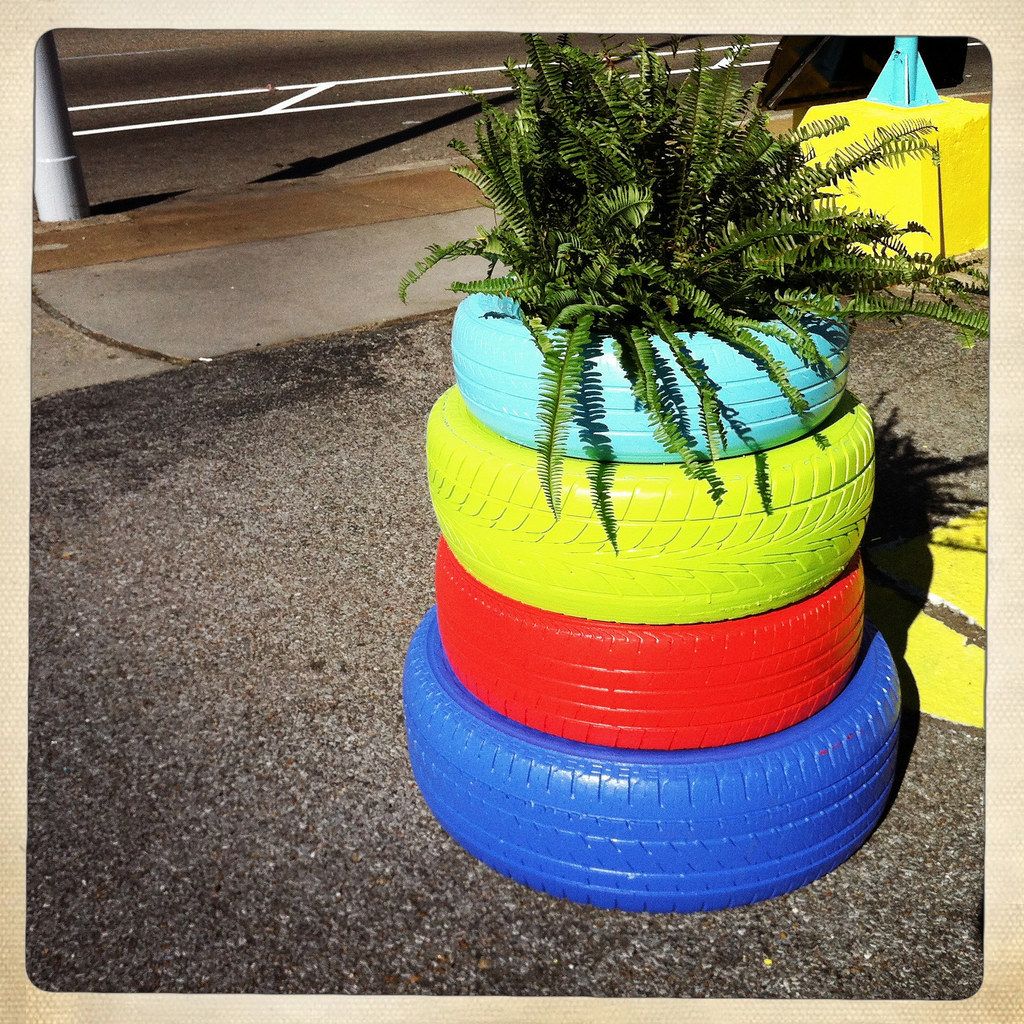 If you have safety concerns, however, you can choose an alternative planter for edibles like fruits and vegetables and leave the tire planter for decorative displays.
If you have safety concerns, however, you can choose an alternative planter for edibles like fruits and vegetables and leave the tire planter for decorative displays.
Similar to hanging baskets, hanging tire planters may require frequent watering for the average non-succulent plant. Watering frequency depends heavily on the time of year. During the fall or winter months, you may only need to water your planter every two to three days. In the heat of the summer, you may need to water your planter daily.
You can use a porous landscape fabric to line the bottom of a tire planter that rests on the ground. This will serve as a weed barrier and still allow water to drain.
Please support this site by sharing!
What to do with recycled tires? Tires are actually the perfect size to use as a planter in your garden.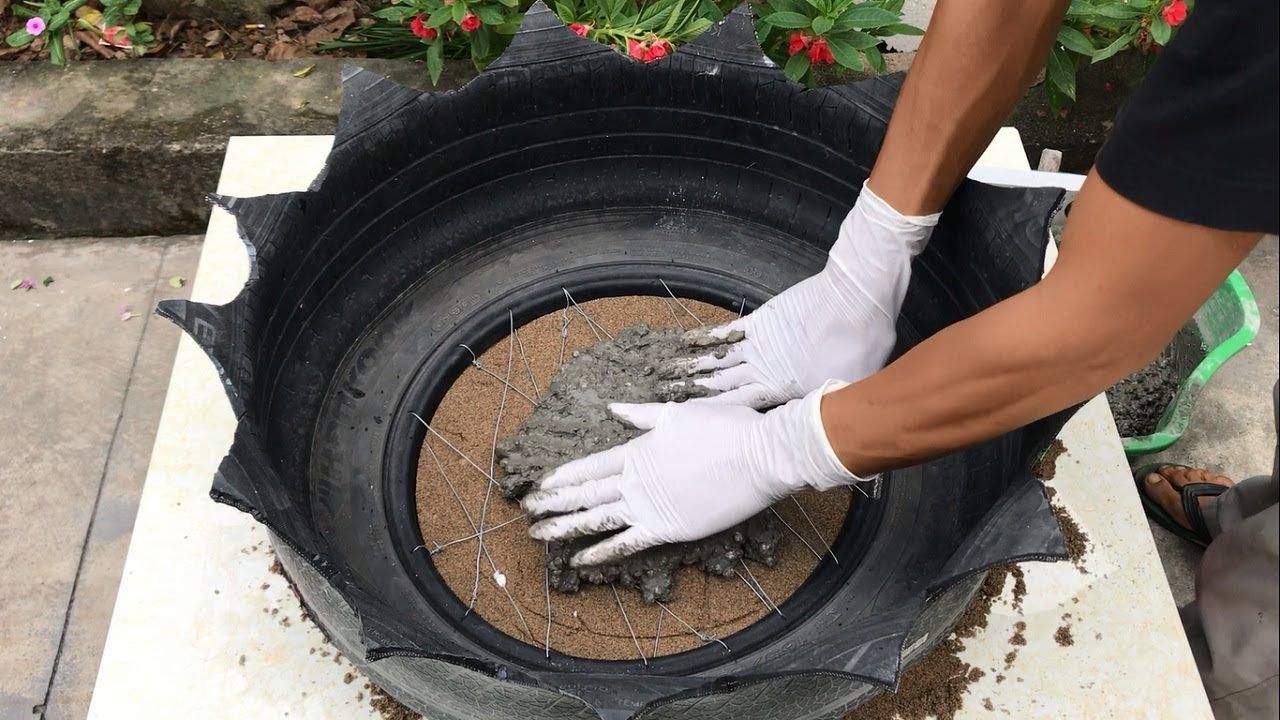 This guide teaches you how to make both simple and inside out DIY painted tire planters. All of your questions will be addressed. From sourcing tires, painting them, and making a planter, you will find plenty of inspiration to get your creativity flowing.
This guide teaches you how to make both simple and inside out DIY painted tire planters. All of your questions will be addressed. From sourcing tires, painting them, and making a planter, you will find plenty of inspiration to get your creativity flowing.
On this page
Please note – you don’t have to paint your tires. The non painted planters also look great when done right!
The non painted planters also look great when done right!
Regardless of the size of your yard, there are many ways to fit a tire. This guide will provide you with a wide range of ideas for all sizes and budgets. Lots of tips and tricks will be shared to successfully make your DIY planter.
Learn to make a Simple Tire Planter. Using car or tractor tires is the most common way to make one. Find out where to get used tires, what paint works best, and how to construct your own. We also answer questions you might have about health risks when using tires in your garden.
Learn to build an Inside Out Tire Planters. They are a fun twist on the classic style. We will get into detail about how to make these and any equipment you might require.
Build a DIY Tire Vegetable Garden. It’s a great way to get extra use from your planter. Use the tires to make raised beds and to keep your crops separate.
Jump to Ideas and Inspiration – 70 beautiful photos and ideas for your project have been gathered so that you can deck out your planter.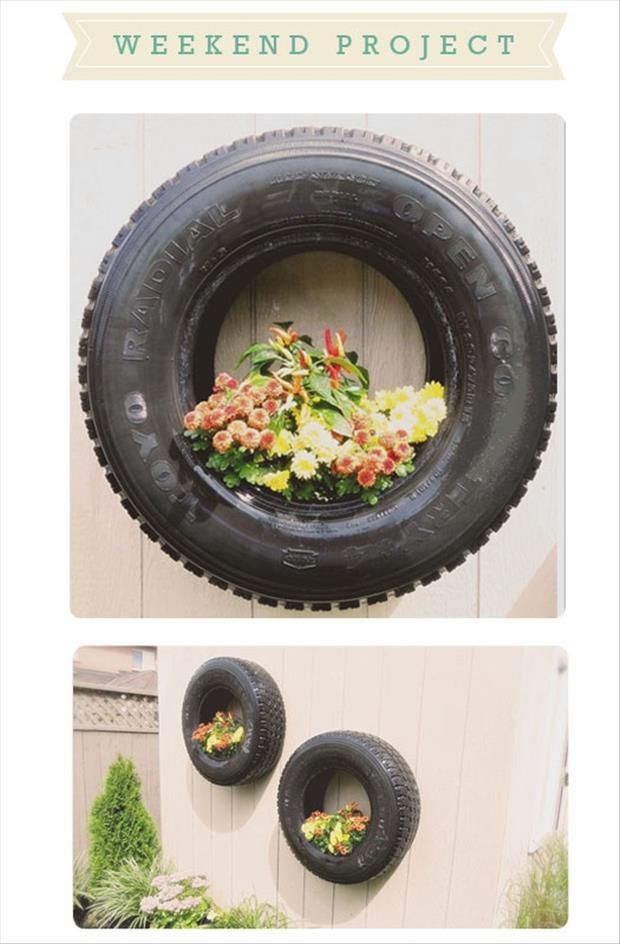
Jump to Creative Tire Planters that are anything but ordinary add a nice touch. Read on for ideas like how to turn your tire into a teacup planter!
Tires can be used in an assortment of ways to make the best planter for your needs. Be it a single tire with one large plant, many tires stacked together, or even a hanging tire, the options are endless! Let’s take a step back from the final product and answer some common questions.
For the DIY projects we will explain, the best tires to use are those from cars, tractors, ATVs, and motorcycles. Keep in mind what your purpose is when choosing a tire.
The easiest recycled tires to access are your own. Most tire shops sell used tires at reduced prices, and if you don’t need road safe tires they might have some to give away. If you live in a big city, search for a tire dump or junkyard.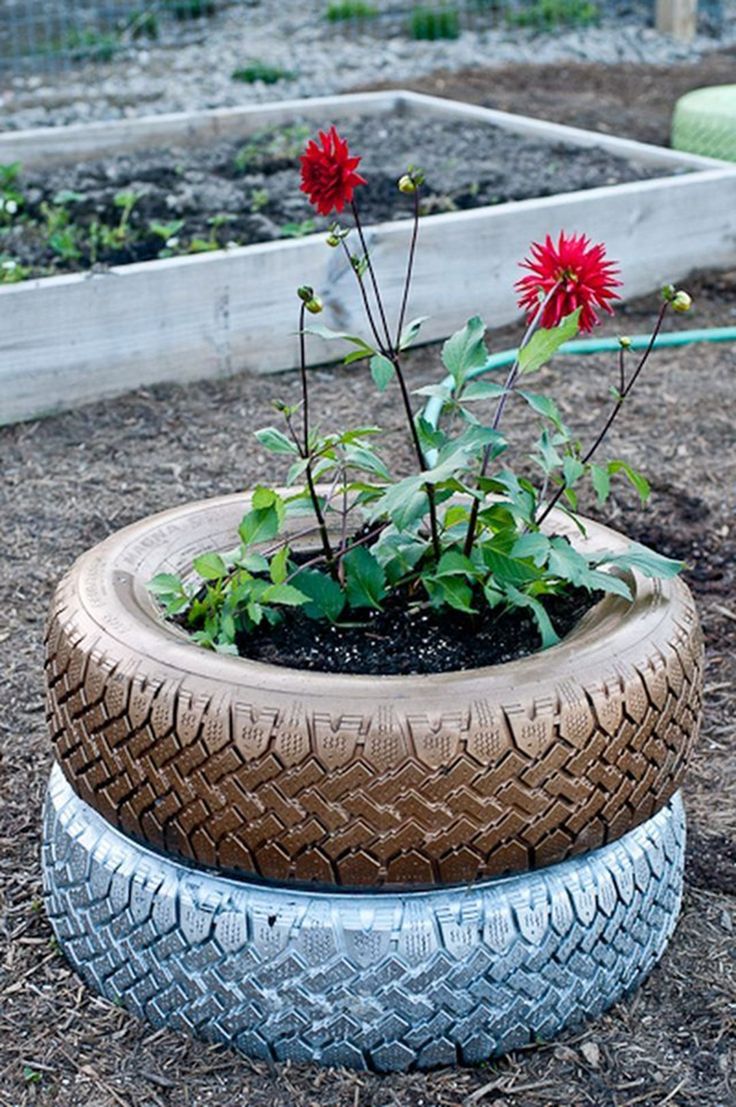 Since tires are hard and expensive to dispose of, chances are you will be able to take as many as you like at no cost.
Since tires are hard and expensive to dispose of, chances are you will be able to take as many as you like at no cost.
As well don’t underestimate online platforms such as Facebook and Craigslist. One person’s garbage is another person’s treasure, or tire planter! Keep in mind that worn tires will work best as they will be easier to cut and maneuver into shapes.
It is not necessary to paint your tire but it is a great way to add a splash of color to your garden, especially when your flowers aren’t in full bloom! If you choose not to paint your tire, note that black rubber will absorb far more sunlight and can get quite warm.
Before you begin to paint, hose down your tires to remove any dirt or dust. Once they are dry, the paint should have no problem sticking. For maximum results, use a white primer appropriate for rubber as a base coat. This will also make it easier to layer on a lighter color. Some spray paints will have a primer included in the product so double-check what kind of paint you have.
When choosing the paint, make sure to choose a non-toxic outdoor paint. Materials for industrial and marine use will be durable, but any outdoor latex or acrylic paint will work.
While you can use large brushes to paint your tire, spray cans are the easiest way to spread the paint evenly. When deciding on a color to paint, think about where you will be placing your tire and whether it matters if it heats up in the sun. For warm locations and delicate plants, lighter colors are the best option to keep the temperature of the soil consistent.
You can use acrylic paint as long as it is made for exterior use as your tire will constantly be faced with the elements. Regular acrylic paint is not entirely waterproof and requires a sealant. Keep it simple and avoid the extra step by purchasing paint meant for outdoor use. While acrylic paints can be more expensive, they maintain greater flexibility when they dry, making them more resistant to cracks and flaking over time.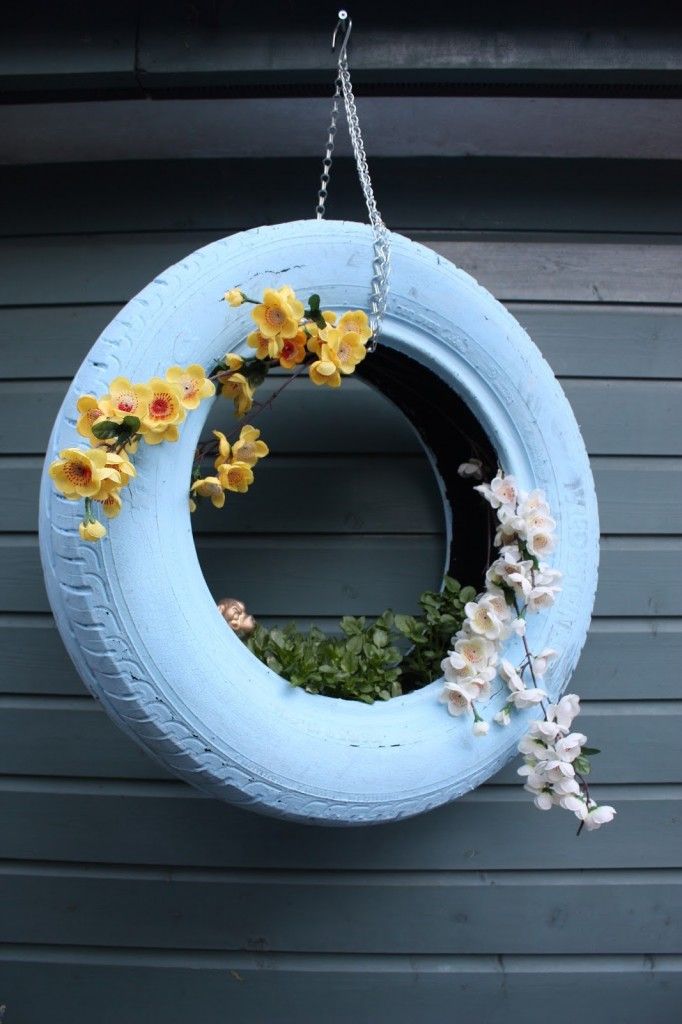
Once your tire is painted you are one step closer to having a nice looking planter. Decide whether you want a single tire in a permanent location, stacked tires, or a raised tire planter. Depending on your choice, you will want to put something on the bottom of the tire.
If you plan to leave your planter in a fixed spot where there is already earth, you do not need to put anything in the bottom. If the planter will remain in a spot with no earth beneath it, you can place some straw or cardboard at the bottom before adding dirt. Poke some holes in the cardboard to ensure airflow and water drainage.
If you plan to stack multiple tires to make raised beds, you will need to have a sturdier base. A plywood plank cut into a circle and drilled to the tire is a good option for a secure foundation. Once again drill holes into the plywood so that water does not accumulate. If you plant to stack many tires, it is a good idea to screw them together to avoid accidents.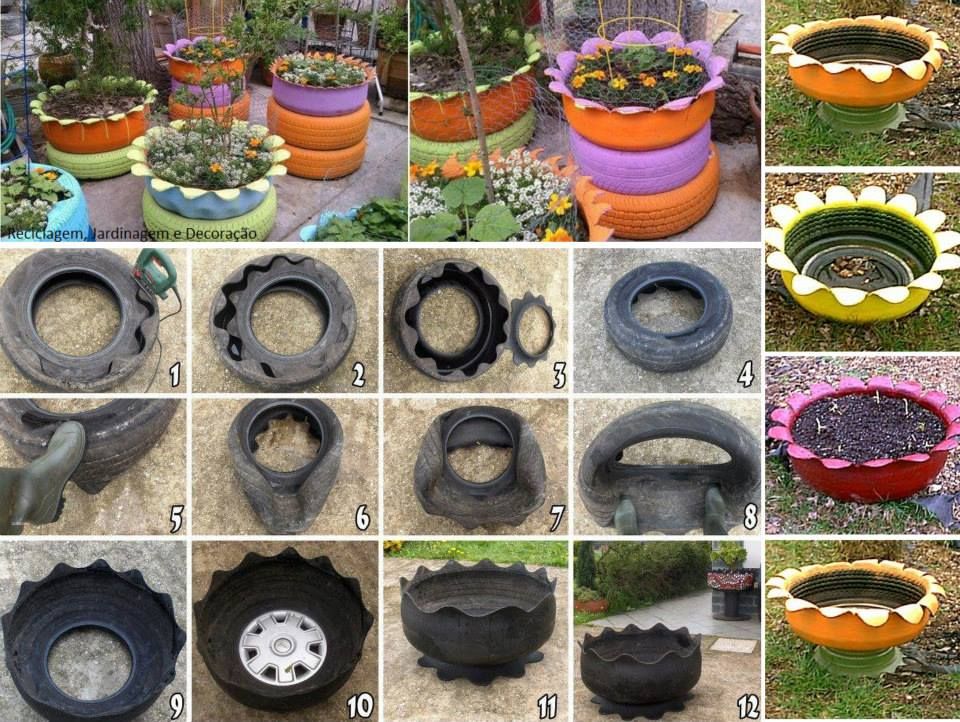
Now that we’ve looked at some common questions about appropriate materials, it’s time to dive into this DIY project.
The first thing to do is to get a tire for your project from one of the options suggested above. Clean your tire properly, and make sure it is dry before you start to paint. If needed, use a primer. Once the primer is dry, paint the tire with your preferred color. Feel free to add patterns and designs.
Decide if you want your planter to be in a permanent spot on the ground or if you want to raise it on a platform. The advantage of a platform is that you can move the planter around as you please. If you use a platform place a layer of cardboard or plastic with holes so that water can drain out.
Next, simply add soil and decide what you will plant in your new planter!
For an extensive description with photos of each step, check out this great guide.
Now that we’ve gone through how to make a basic planter, it’s time to look at some variations.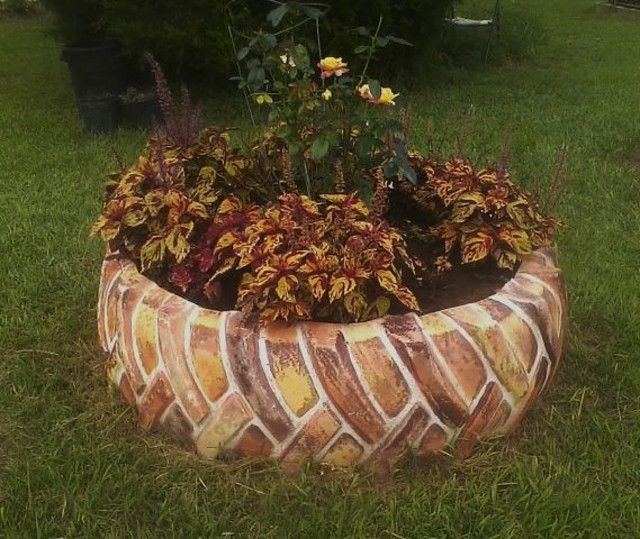 How about hanging your planter? If you have a sturdy tree or railing this could be a good place to hang it. Of course, you can also drill hooks into a wall. For a rustic look, you can use a rope tied to your tire. However, for something more secure, a chain is ideal.
How about hanging your planter? If you have a sturdy tree or railing this could be a good place to hang it. Of course, you can also drill hooks into a wall. For a rustic look, you can use a rope tied to your tire. However, for something more secure, a chain is ideal.
The same initial steps to make a basic tire planter must first be followed. Find a tire, clean it, and choose if you want to paint it. Depending on where and how you want to hang your planter, choose the tire size accordingly. This is a good place to use smaller motorcycle or ATV tires.
When your tire has been cleaned and painted, drill some holes in the bottom half so that rainwater does not accumulate. You can put a layer of porous material such as cloth so that the soil does not fall out.
Next, drill a hole in the center at the top of the tire to insert an eye bolt, securing it with a nut on the inside. If you plan to use a rope and a solid knot, you can skip this step. From the eye bolt, attach your chain which can hang from a hook or railing as desired.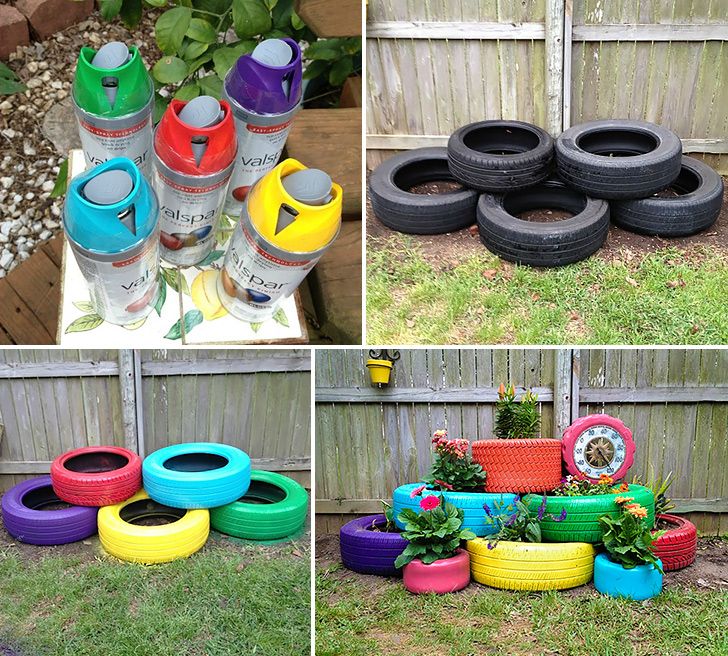
Once your tire is hanging in place, fill the bottom with topsoil. Then, plant your flowers and your hanging tire planter is ready!
Also, see this guide for making a hanging planter.
Rubber tires are made up of a large number of components, many of which are indeed toxic. This is why it is difficult and expensive to dispose of old tires. Therefore, using tires for DIY projects has lots of benefits since they do not need to be brought to a dump where they will be burned, leaching toxins into the air.
Both sides of the debate have many arguments and are ultimately inconclusive. While you can surely find many people who would refuse to use tires to grow edibles, there is no straight evidence that they are harmful. Accordingly, it really is a personal decision and risk assessment.
Tires do eventually begin to leach certain components into the soil. However, these chemicals would end up in the air if the tires were to be burned during disposal. Generally, it is understood that it would take decades for the tire to really begin to degrade. At that point, it is also not certain whether the molecules released would actually make it into the plant.
Generally, it is understood that it would take decades for the tire to really begin to degrade. At that point, it is also not certain whether the molecules released would actually make it into the plant.
A good compromise if you plan to use your planter for edibles is to rotate them for flowers after a few years. However, if you want to be as safe as possible, simply avoid using tire planters for food plants and stick to decoration!
If you want your tire to look a little less like a tire, inside out planters are a unique twist on the standard. Just as the name says, these are made from tires that have been inverted. When choosing a tire to invert, there are a few extra details to consider.
Not all tires can be used to build an inside out tire planter. Older tires will be more flexible and are better suited for this DIY project. Tires can be tested by pushing the curve where the tread meets the rubber sidewall.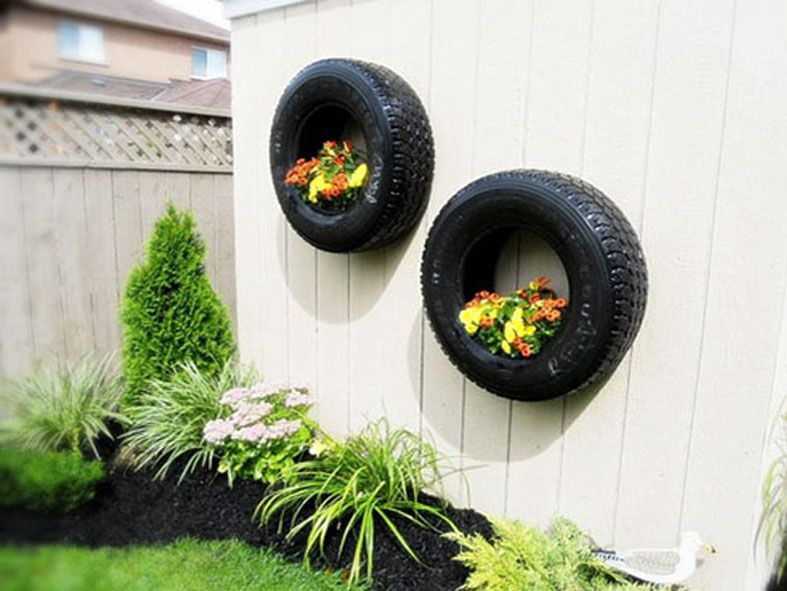 If it pushes in easily your tire will be less challenging to flip. If not, keep on looking!
If it pushes in easily your tire will be less challenging to flip. If not, keep on looking!
Inverted tire planters require the additional step of cutting the tire. To facilitate the process, draw a line where you want to cut. Since you are just cutting the softer inner wall, any sharp knife will do. Make sure to keep safety in mind – gardening gloves are a good idea at this stage.
Once you have cut through the tire, it is time to invert it. Find the soft spot where the curve meets the tread from the first step and push. At the same time, pull the inside cut wall towards you. It might take a few tries but once the tire starts inverting it is just a matter of making it around the circle.
All of these steps can be done if your tire has a rim. You will simply have a pedestal for your planter! Given the force and handling required to invert your tire, wait until this step is complete before properly cleaning and painting it.
Visit felderrushing.net to see detailed photos of each step to make sure everything goes smoothly!
Not only can you use tires to make decorative planters for flowers, but you can also use them to set up a vegetable garden.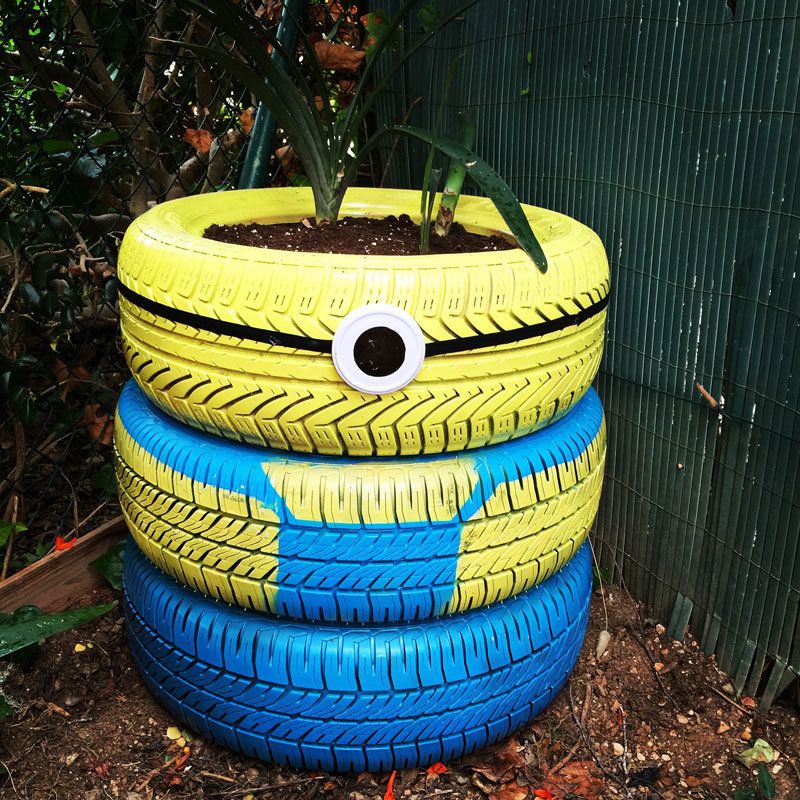 As mentioned above, since the tires are not being burned, the likelihood of toxic elements entering your vegetables is very low and would take decades. Rotating tires for different uses as well as lining them can be good ways to eliminate any risk.
As mentioned above, since the tires are not being burned, the likelihood of toxic elements entering your vegetables is very low and would take decades. Rotating tires for different uses as well as lining them can be good ways to eliminate any risk.
There are quite a few benefits to using tires for your vegetable garden, as well as some considerations to keep in mind for maximum results.
Building raised vegetable gardens from lumber can be quite expensive so recycling tires is a great way to save some cash. As well, by raising the planters, you will avoid some ground pests and reduce weeds. Raised tire planters are especially useful for gardeners with back issues or decreased mobility as they don’t require constant bending or kneeling.
Tire planters can be a huge advantage if you live in a place with hard-packed soil. Plants can have difficulty extending their roots into these soils, whereas you can fill your planter with topsoil and compost and raise it to the height you desire by adding extra tires.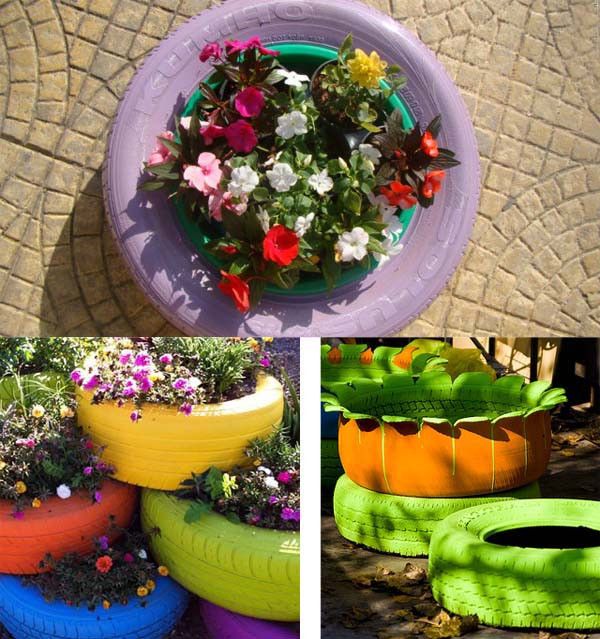
If you are painting your planter, it is important to use lighter colors if you want to plant vegetables that require cooler soil. Black tires will absorb the sunlight and heat the soil, which is a benefit for crops such as potatoes, peppers, and carrots but can easily ruin others. Since the soil will remain warmer than ground soil, tire planters are a great way to start planting earlier in the season. Common gardener frustrations such as frost won’t be an issue as your soil will stay protected.
Besides using your tires for DIY planters, a stack of tires can make a great compost bin. Stack tires until you reach the height you want. Once your bin is full, remove each tire one by one while you use the compost and begin stacking your next bin.
Paint your planter light blue to hold more delicate crops such as lettuce.
Separate your vegetables and herbs to make watering and picking extra simple.
Layer your DIY tire planters to create a tiered look.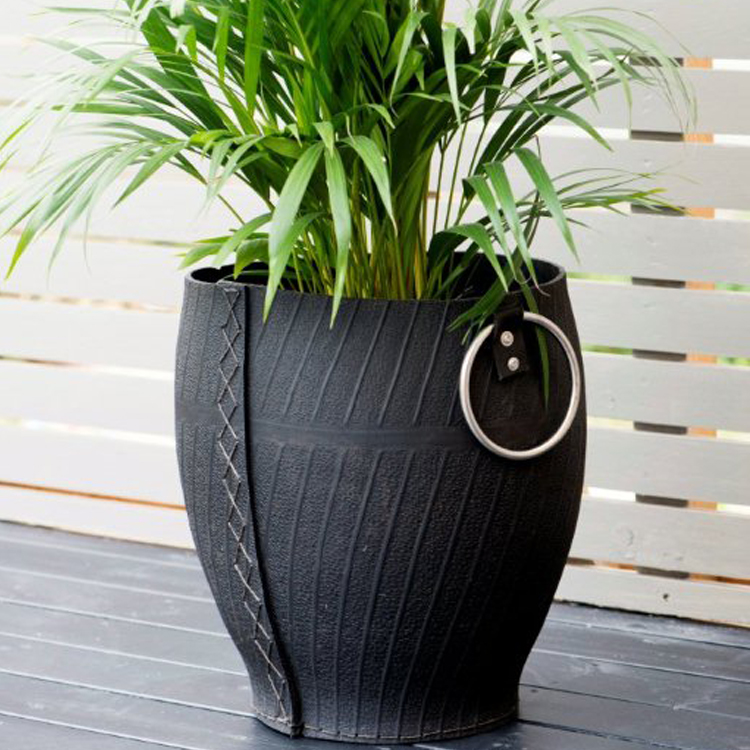 Use bright colors to complement your flowers.
Use bright colors to complement your flowers.
Tread marks can add an extra pattern to your painted tires.
Tiered tire planters can also create low wall partitions between separate parts of your garden.
If you have plenty of tires, create this fun pyramid shape. Make sure to leave space for your flowers to grow and receive sunlight.
Think about using different sizes of tires to create a quirky look.
If you want to keep your planters low to the ground, lay them side by side with different flowers showcased in each.
A single tire planter can brighten up any corner of your garden if you fill it with colorful flowers.
No need to stop at flowers – succulents are a great choice for filling your DIY planter.
Large tractor tires make the perfect base for small bushes.
Smaller tractor tires are great to use as individual flower pots.
If you have a large tractor tire, fill it with plants and make a flag stand.
Place inverted tire planters on top of regular tires to create a cool look.
A simple inverted planter painted in a solid color looks like a star-shaped pot.
Get creative by painting your planter in different colors for a petaled look.
Inverted tire planters can also be stacked to create layers.
No need to worry if your tire still has a rim. Your inside out planter now has a pedestal!
Stacking tires for your DIY planter is a great way to make all your plants visible.
A single stack of tires can make a great focal point for your entrance.
If you have lots of tires, why not create a wall?
Stacked tire planters near your balcony make it easy to water your plants from above.
If you’ve always wanted your very own wishing well, look no further! A few stacked tires with the right paint job will do the trick.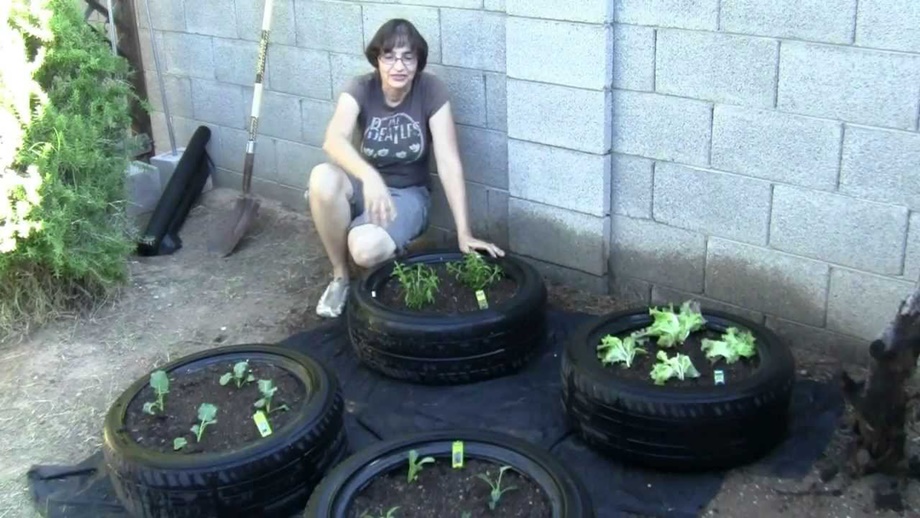
Patterns and designs are a great way to add life to your recycled tires.
Anywhere you can attach a hook makes a good home for a hanging planter.
Decorate stone walls with brightly painted hanging tire planters.
Bring a brick wall to life by painting it in pastel tones and hanging planters.
As long as your plants are happy, you can fill your new DIY planter to the brim!
No need to go overboard with different flowers. A simple plant will look great.
Make sure to have some fun while doing your DIY project!
Feel free to leave your tire paint free and natural, the bright flowers are sure to compensate.
A solo tractor tire is a great piece to display some blooms.
Bamboo walls make a great spot to hang your tires. Fill them with flowers and greenery to brighten up your space.
Simple stacked tires make a great home for creeping plants.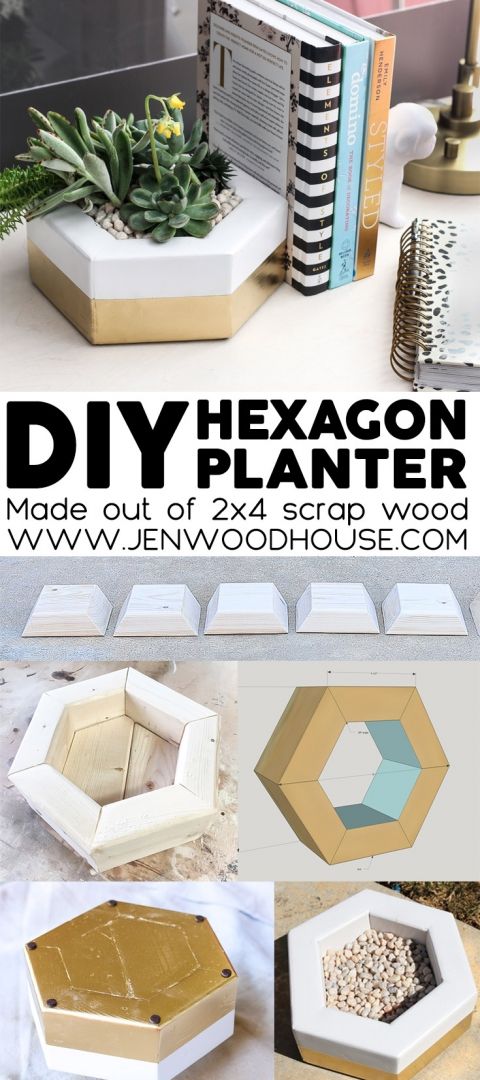
If you are motivated, the options are truly endless. Tires decorated as sushi rolls, animals, teacups, and wishing wells are just some of the multitude of DIY projects you can do with recycled tires.
Depending on the style of teacup you want to make, you can use an inverted tire with a rim, or stack two tires to make your base. You can get creative with the handle; for example using strips cut from a tire, plastic, an old garden hose, or a hardened rope. Simply screw the two sides at the level you prefer.
Check out these two videos for different takes on teacup designs.
A very detailed approach using stacked tires.
A simpler teacup using an inverted tire with a rim.
If you want to create a design that resembles a pot instead of a flat tire, be sure to use a tire with the rim still on. Then, follow the same steps as for your inverted planter with the rim acting as your stand.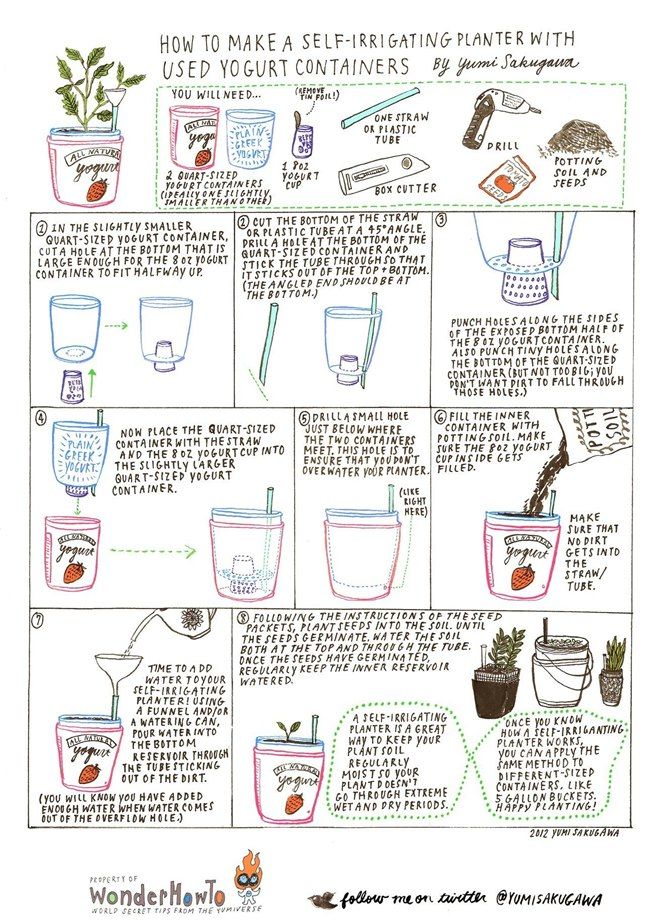
Bring the tropics to your garden with these DIY hanging parrot and toucan tire planters.
Who knew what a knife, some green paint, googly eyes, and determination could accomplish?
Make sure you have a sharp knife and draw your cutout lines when attempting these floral designs.
Stone walls can be the perfect backdrop for your tire wall. Secure everything in place to avoid any mishaps.
Did someone say swan lake?
Cut your tires in half to make this flower-shaped bed.
It’s tea time!
Flowerpot for flowers in the form of a toucan
It is not difficult to renew and ennoble the landscape in the garden and summer cottage, you just need to find materials that are already unused and unnecessary at first glance, for sure everyone will always find something like that.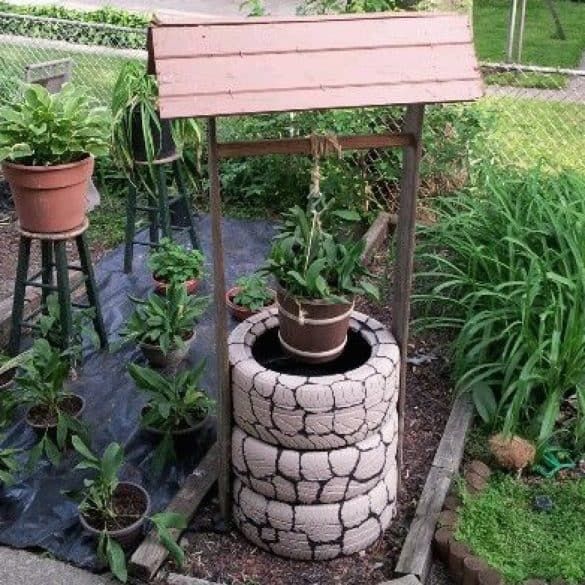 Do not rush to get rid of old tires, they can still do a good job, make beautiful and original planters out of them, be sure that such products will definitely not leave anyone indifferent. Many gardeners have managed to appreciate this material, because rubber is quite easy to process, its flexible elastic structure allows you to give products the desired shape.
Do not rush to get rid of old tires, they can still do a good job, make beautiful and original planters out of them, be sure that such products will definitely not leave anyone indifferent. Many gardeners have managed to appreciate this material, because rubber is quite easy to process, its flexible elastic structure allows you to give products the desired shape.
The main feature of , which distinguishes the planter from the usual flower pot for plants, is the absence of drainage holes in the bottom of the tank through which excess water flows out. A well-chosen container will not only be a decoration, but will also help facilitate the care of plants.
Pots can be either hanging or floor standing!
can be used as a decoration for a facade or fence, they can also be hung on trees
KASPO may also be simple in the form of cut tires
9000 9000 9000
or a whole covers that can be hung on the wall
Materials needed:
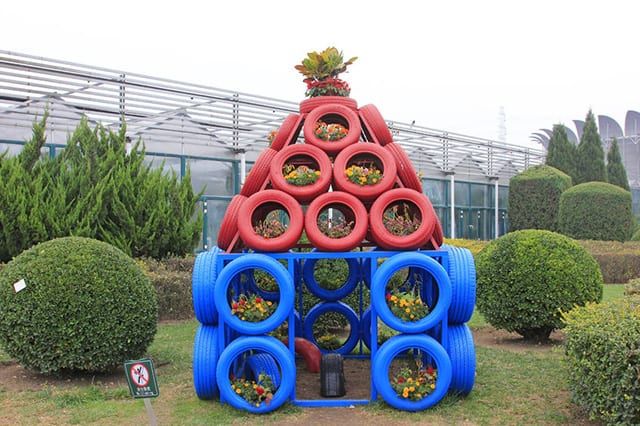
Stages of work
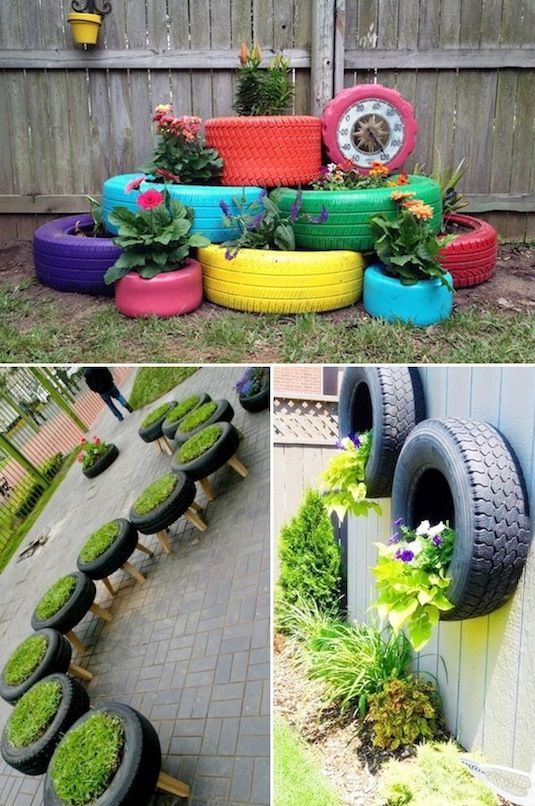
Hang the finished planter with a strong rope or wire to a horizontal structure, you can put a flowerpot inside.
Photo source: www.prosto-ma-ma.ru
Variants of such a planter can be different, it all depends on how exactly you cut the tire.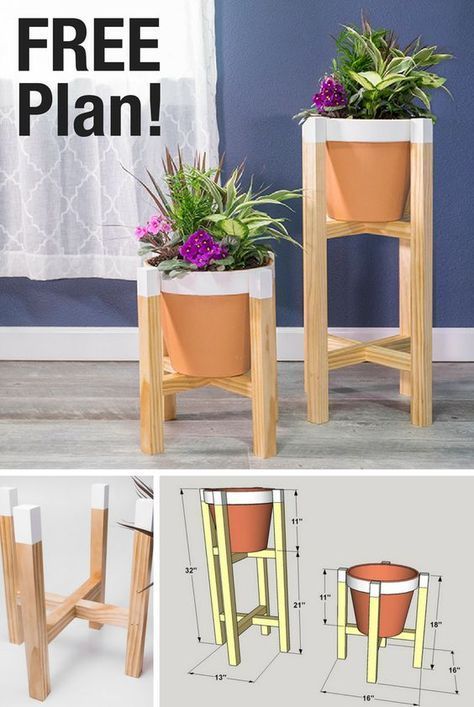 Use different bright colors to bring all kinds of ideas to life
Use different bright colors to bring all kinds of ideas to life
An unusual planter can also be made in the form of a rooster, as in the photo below. This planter is not hanging, it is easy to install it anywhere, you can build a similar stand for it
Photo source: www.pinterest.com
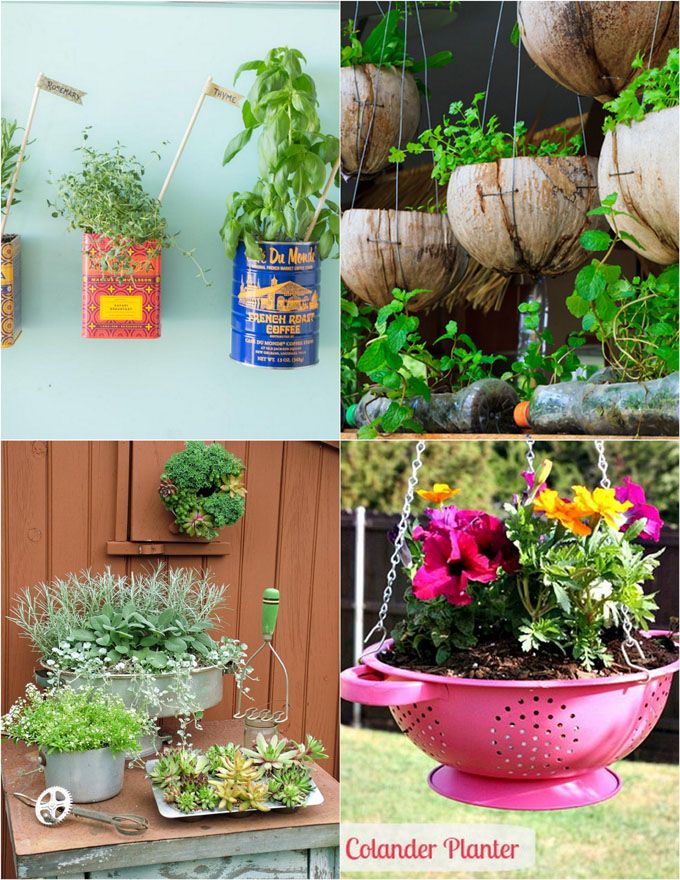
Markers or chalk are best used for this purpose.
You can think of your own version of the swan, but the main parts should be a neck with a head and wings. The diagram below is quite simple, but can be completed with various decorative details or additional cutouts and scalloped edges if desired.
This photo is a planter-pot swan with tires cut out without reinforcing and fixing the neck with wire or other available materials, the head is also made simply without the use of additional elements.
1. Before starting work, it is advisable to make a diagram for yourself on paper, then draw with chalk on the old cleaned tire the contours along which the details will be cut.
2.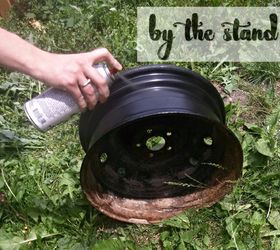 After cutting the cuts, it is worth rinsing and degreased the surface of the tire again, and then cover it with a primer, then the product will last longer.
After cutting the cuts, it is worth rinsing and degreased the surface of the tire again, and then cover it with a primer, then the product will last longer.
3. Bend the wings of the swan and give them the final shape, the edges of the wings and tail can be jagged, and the neck of the swan can be fixed and given the desired curve with thick wire, later it can be masked with paint.
4. The final part of the work remains: color the resulting product, use additional materials to make it more believable.
For example, you can carefully cut out a head from foam and attach it to the neck of a swan. There can be many options here, someone tries to give the necessary shape immediately when cutting the tire, some even use cut plastic bottles for this, as in the photo below
Photo source: www.mnogo-idei.com
Rubber is a material that requires special handling. For painting such products, use the following types of paints:
For painting such products, use the following types of paints:
Acrylic enamel is a good option, it can be thinned with water, it is also odorless. Such paint can also be purchased in the form of a spray, in which case it is much more convenient to apply, and it also reduces consumption. To increase the adhesive properties of the oil coloring composition, it is recommended to pre-treat the rubber surface with a primer, so you get rid of possible roughness and irregularities. The most optimal in this case will be the primer composition GF-021, apply it with a brush, it will reduce paint consumption. To enhance the strength of the coating, add a little PVA adhesive to the primer. It is possible to paint products only after the final drying of the primer, it is advisable to paint it on the inside as well.
Planter from tires in the form of a basket
for example, in this photo:
Photo source: www. poly-slovakia.ru
poly-slovakia.ru
Save
More in this category: DIY wooden flowerpots Flowerpots made of concrete (from cement) with their own hands »
| Beautiful original flowerbeds , flowerpots and flowerpots made of tires are durable and easy to manufacture. How to make a pot out of a tire with your own hands To successfully implement the idea of creating a flowerpot or planter from a tire, you need to have on hand: The tire must be cleaned of dirt, dust and stones stuck in the tread. This is necessary for better application of paint and decorative elements for a future work of landscape art. Having decided on the appearance of the future masterpiece, a pattern is applied to the clean surface of the tire with chalk. A clear markup in the future will save you from flaws, and it will be much easier to work. The drawing does not have to be symmetrical. Petals or leaves of different sizes look more interesting and natural. Nature does not create perfectly similar flowers. Even in one flower, each petal has its own vein pattern or edge shape. Next, a pattern is cut out along the outlined contours. This is the hardest part of the job. Patiently carving drawn swirls in hard rubber with a knife is not very easy. For this, it is better to use a jigsaw. The cut out part should not be thrown away, as it can serve as a decorative element for a stand or serve as a border for a small flower bed. If the process of turning the tire inside out is necessary, it will require physical strength. The main thing is to understand and comprehend the principle of this stage. Having fixed the tire in the center and holding the cut edge, you must try to turn it in the opposite direction. It is important to do this with at least a small part of the wheel. Further, the process will go easier according to the domino principle: each part carries the other along with it. Example of making a flowerpot from a tire:
Tire planter example:
The process of decorating the resulting product is the most interesting stage in the manufacture of a flower bed, but it requires preliminary preparation. The surface of the future flower house is carefully polished, as a result of which small irregularities are smoothed out. Then everything is again thoroughly washed and degreased with a solvent or white spirit. The prepared tire can be sprayed with a brush, roller, spray gun or spray can. Further decoration depends on the gardener's imagination. For this purpose, you can use multi-colored buttons, glass, shells, etc. What plants and how to plantin a tire pot Almost any plant is suitable for planting in a flowerpot or planter from a tire. The general rules for breaking flower beds are also suitable for a rubber miracle: ✿ The composition must be attractive from any point of view. Tire vases are placed directly on the ground or on a stable base with a chain. Planters can also be hung on a gazebo, fence, tree or a special support. The space inside the tire structure is filled with drainage and soil, then plants are planted. For planting, a mixture of fertile soil, sand and humus is prepared in a ratio of 2: 1: 2. At the bottom of the flowerpot, if any, drainage is poured with a layer of about 5 cm. If the flower bed lies directly on the ground, then drainage is not needed. In this case, excess liquid will be absorbed into the ground. A small flowerpot from a tire requires a more careful approach. A small amount of earth is easier to gain moisture and quickly part with it. Plants suffer from such changes in humidity. This can be avoided by adding vermiculite to the soil mixture for a flowerpot or planter. Ideas for flowerpots and planters from tires
| |
| |